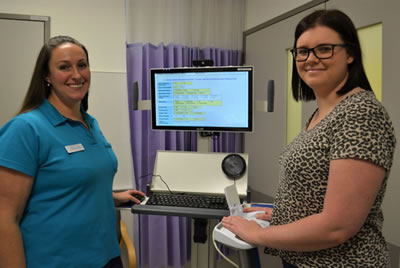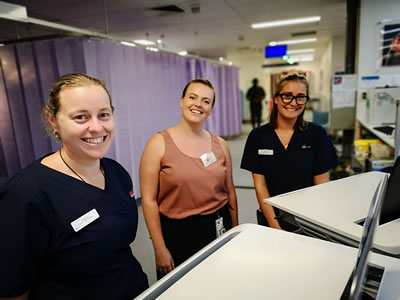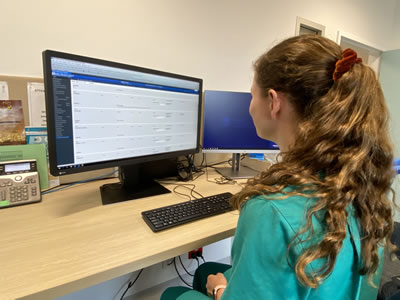A pilot program that aims to halve the number of breast cancer patients who might develop chronic lymphoedema post-surgical lymph node removal is underway at NSW Health.
Initiated by the Ministry of Health and supported by an eMR solution developed by eHealth NSW, the project - which kicked off in January this year - has already been rolled out to 13 Local Health Districts with hopes to screen up to 3,000 breast cancer patients and survivors across the state each year, or 12,000 patients over the four-year life of the pilot.
Pilot program hopes to improve quality of life for survivors
Recognised as a swelling in limbs and other parts of the body, lymphoedema is a debilitating and chronic lifelong condition that affects as many as 500 breast cancer patients in NSW each year.
For those living with lymphoedema, physical movement is restricted. It can be harder to fit into clothing; patients may suffer repeated skin infections and experience a drastic reduction in their quality of life.
While there is no cure, Occupational Therapist from Southwest Sydney Local Health District, Stacey Bradshaw, says early intervention is key. “By reducing the number of patients who develop chronic lymphoedema, we aim to improve the quality of life for breast cancer survivors.”
“Up to this point, the main barriers to diagnosis that we faced as clinicians were identifying at-risk patients, and the administrative burden of the surveillance process. This is where eHealth NSW stepped in. We worked collaboratively to design a fit-for-purpose PowerForm that would efficiently capture patient information, as well as collect clinical assessment, intervention and outcome data for all patients involved in the pilot.
“eHealth NSW also developed two additional reports to increase the efficiency of our pilot – one to help identify high risk patients that would require further assessment and follow up care - granting us visibility over vulnerable patients that we did not previously have; and a second report to help us manage compliance with federal government reporting requirements - critical for evaluating the pilot.”

The need for the eMR solution to streamline the process was determined by the Chief Allied Health Officer at the Ministry of Health, Andrew Davison, who recognised inconsistencies across the level of patient data captured due to the lengthy process.
eMR solution helps free up clinicians to deliver better care
He says the primary benefit of the eMR solution was that it helped to free up clinicians, allowing them to spend greater time assessing and treating their patients. And although the two additional reports came into effect later, both have proved invaluable.
“Prior to the development of the eMR solution, clinicians were required to manually enter 34 separate fields of data into an excel spreadsheet each time they interacted with a patient. This was in addition to completing their clinical documentation. During the first three months of the pilot, (January - March 2021) there were 418 patient interactions. Our process proved not only time consuming, but it detracted from time spent with patients and risked impacting data accuracy.
“The efficiencies provided by the eMR solution and reports ensure that more patients are able to undergo screening within the pilot, and that direct patient contact is maximised.”
Stacey Bradshaw echoes this enthusiasm, stating that her clinicians described the eMR PowerForm as “logical and intuitive,” and that it “substantially enhanced workflow.”
“For patients in the pilot this means their clinicians will have more time to monitor their recovery, potentially preventing the development of chronic lymphoedema and improving their quality of life after surviving breast cancer.”
For more information about the pilot project, visit: Lymphoedema early intervention pilot to help breast cancer surgery patients - News (nsw.gov.au)
To find out more about the eMR solution used in the pilot, email: EHNSW-Communications@health.nsw.gov.au



